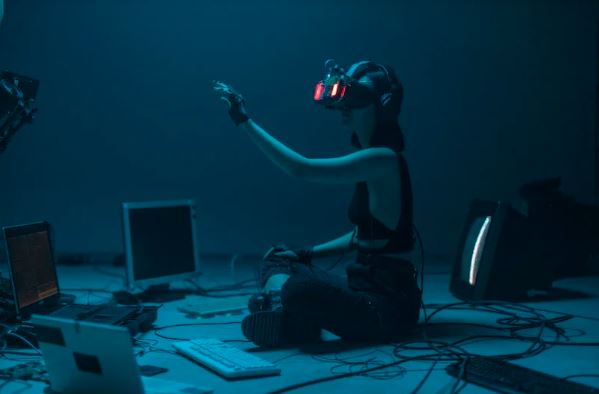The landscape of artificial intelligence (AI) in video generation has taken a significant leap with the unveiling of a new model, Sora, by OpenAI.
Sora marks a pivotal advancement, mirroring the revolutionary impact of its predecessors, ChatGPT and DALL.E, and setting a new benchmark in AI technology.
With the capability to create up to one-minute video clips from simple text inputs, Sora ushers in a new era of content creation, blending creativity with technological innovation.
IGaming technology is not standing still either, you can see it on the example of slots sites not requiring ID verification, which provide the best offers and bonuses
 Unveiling Sora: A Glimpse into the Future
Unveiling Sora: A Glimpse into the Future
Sora broadens the horizon of generating visual content from text, a feat previously achieved by DALL.E in the realm of images.
This model intricately understands and replicates the dynamics of real-world elements—reflections, textures, materials, and physics—over time.
The result is a series of videos that push the boundaries of realism and detail, demonstrating a significant leap in AI’s ability to mimic reality.
Key Features of Sora
- * Text-to-Video Generation: Sora enables users to bring their descriptions to life, transforming written scenes into dynamic videos with ease.
- * Realistic Physics and Materials: The model showcases an unparalleled understanding of real-world physics and materials, lending its videos an uncanny lifelike appearance.
- * Dynamic Lighting and Reflections: Through its sophisticated grasp of lighting and reflections, Sora adds an unprecedented depth and realism to its generated content.
The Impressive Capabilities of Sora
Sora’s portfolio of examples speaks volumes about its capabilities.
The model has produced a diverse array of video content, from a stylish woman navigating a neon-lit Tokyo street to a white vintage SUV traversing a steep dirt road.
These clips, though lacking audio, are meticulously detailed, showcasing Sora’s precision in rendering accurate skin tones, movements, and even intricate elements like reflections.
Real-World Applications and Implications
The introduction of Sora not only showcases the advancements in AI-generated video technology but also opens up a myriad of real-world applications.
The potential for creating detailed, realistic video content without the need for physical filming could revolutionize industries such as advertising, filmmaking, and even education.
However, this also raises concerns about the ethical implications of such technology, including the potential for misuse in creating misleading or deceptive content.
Challenges and Limitations
Despite its impressive capabilities, Sora is not without its challenges and limitations.
The technology, while advanced, still struggles with certain aspects of video generation, such as accurately rendering complex human interactions or the subtle nuances of natural environments.
These limitations highlight the ongoing need for improvement and the importance of ethical guidelines in the development and use of AI technologies.
The Future of AI-Generated Videos
As Sora continues to evolve, the future of AI-generated videos looks promising.
The rapid pace of advancements in AI technology suggests that we are only beginning to scratch the surface of what is possible.
As models like Sora become more sophisticated and accessible, we can expect to see an explosion of creative and innovative video content, pushing the boundaries of what we previously thought possible.
The Potential and Challenges of AI-Generated Videos
The unveiling of Sora by OpenAI has sparked a wave of excitement and apprehension across various sectors.
This advanced AI model, capable of generating video content from textual descriptions, stands at the crossroads of innovation and ethical dilemmas.
While it heralds a new era in content creation, offering speed and quality previously unattainable, it also opens up avenues for misuse, particularly in the dissemination of misinformation.
Applications and Implications
- * Stock Footage and Advertising One of the most promising applications of AI-generated videos lies in the realm of stock footage and advertising. Sora offers a cost-effective and efficient alternative to traditional videography, allowing for the creation of specific and high-quality video content on demand.
This could significantly reduce costs and time constraints for marketers and content creators, providing them with the flexibility to tailor content to their exact needs without the logistical challenges of traditional video production.
- * Creative Exploration For artists and creators, Sora presents an unparalleled opportunity to push the boundaries of storytelling and visual art. Freed from the limitations and costs of physical video production, creators can explore new narratives and artistic expressions.
This technology could enable the visualization of scenes and concepts that would be difficult, if not impossible, to capture with a camera, thereby expanding the creative palette available to artists and filmmakers.
- * Ethical Concerns However, the realistic nature of AI-generated videos introduces significant ethical concerns. The potential for creating highly convincing fake news or deceptive content is a major challenge.
Videos generated by Sora could be used to create false narratives or impersonate individuals, raising issues of trust and credibility in digital media.
The implications for misinformation, particularly in politically sensitive contexts, are profound and demand careful consideration and regulation.
Safeguarding the Future of AI-Generated Content
In response to these concerns, OpenAI has implemented several safety measures, such as watermarking videos produced by Sora, to help users distinguish between AI-generated and genuine content.
This watermark acts as a visual cue, signaling viewers to the artificial nature of the content.
However, OpenAI acknowledges that watermarks alone may not be sufficient to prevent misuse.
There is a pressing need for comprehensive guidelines and ethical standards to govern the use of AI in video generation, ensuring that it serves the public good while minimizing harm.
The Road Ahead for Sora
As of now, access to Sora is tightly controlled, limited to a select group of testers and trusted creators.
This cautious approach allows OpenAI to monitor the model’s performance closely, gather feedback, and address any issues that arise, ensuring that improvements are made before the technology becomes widely available.
By doing so, OpenAI aims to strike a balance between fostering innovation and ensuring responsible use, setting the stage for the future development and deployment of AI-generated video content.
The path forward for Sora and similar technologies is both promising and fraught with challenges.
As these models continue to evolve, they will undoubtedly transform the landscape of video content creation.
However, it is imperative that this evolution is guided by ethical considerations and a commitment to transparency and accountability, ensuring that AI-generated videos enhance our digital experience without compromising the integrity of our information ecosystem.
 Reflections on the Rapid Evolution of AI
Reflections on the Rapid Evolution of AI
The unveiling of Sora by OpenAI serves as a vivid illustration of the astonishing pace at which artificial intelligence technology is advancing.
A mere comparison of today’s achievements with those from just a year ago lays bare the exponential growth and progress within the field.
This rapid evolution brings us to the cusp of new frontiers, demanding a thoughtful examination of the impact these technologies have on society, creativity, and ethical standards.
Looking Forward
The relentless advancement of AI technology is progressively blurring the lines between reality and artificial creation.
In the foreseeable future, AI is expected to not only mirror human creativity but also forge new paths in artistic expression that were previously beyond our imagination.
The evolution of AI video generation, from its initial stages to the advanced capabilities of models like Sora, reflects a remarkable journey of human innovation.
It hints at the vast, untapped potential that remains to be explored, promising a future where AI could revolutionize the way we conceive and interact with digital content.
Conclusion
The advent of AI-generated videos, as exemplified by Sora, signifies a pivotal shift in the realm of content creation.
This innovation brings with it immense opportunities for efficiency and creative exploration but also compels us to confront the challenges it poses to authenticity, ethics, and the essence of creativity.
As we venture into this new era, striking a balance between harnessing the benefits of AI and addressing its implications thoughtfully will be crucial.
Ensuring a future where video content remains innovative, responsible, and deeply human is a collective responsibility that we must embrace with both caution and enthusiasm.
 Unveiling Sora: A Glimpse into the Future
Unveiling Sora: A Glimpse into the Future Reflections on the Rapid Evolution of AI
Reflections on the Rapid Evolution of AI







